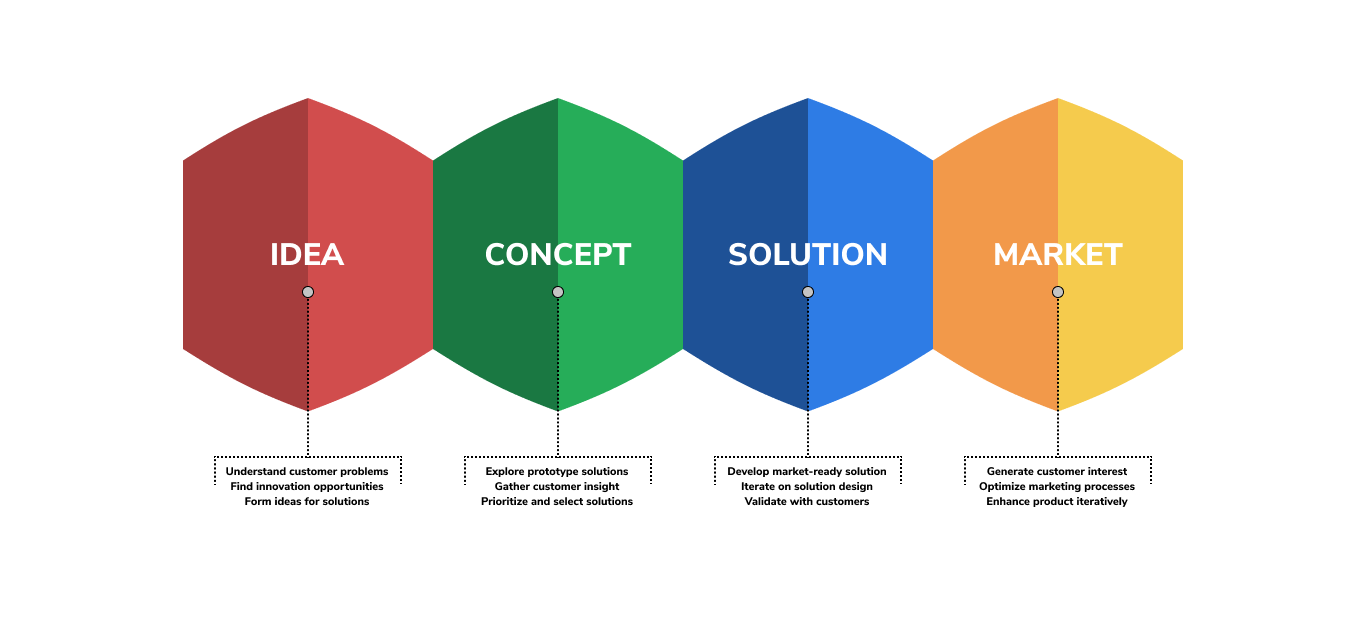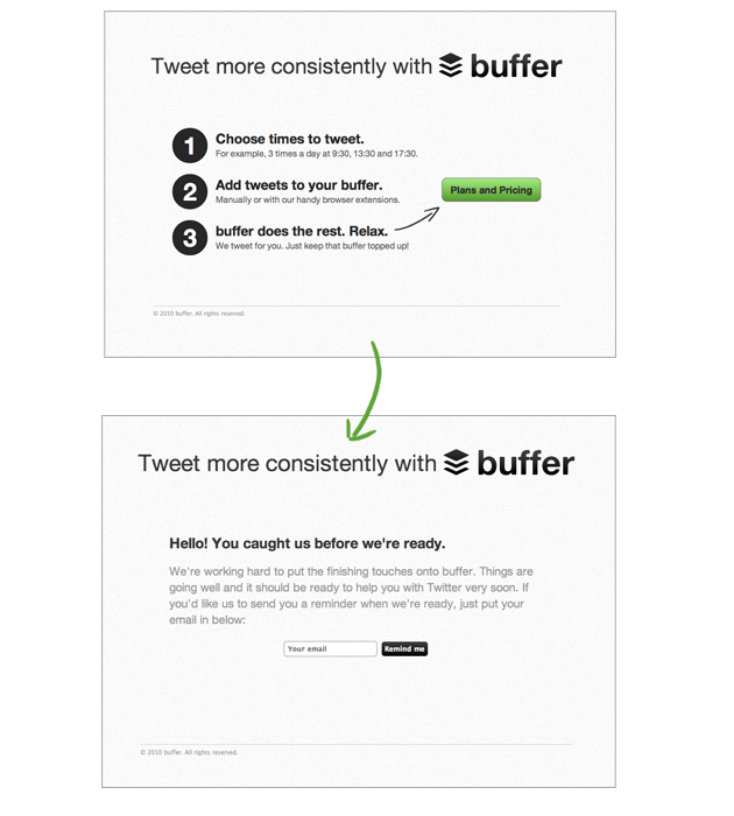Agile, design sprints, lean startup, or design thinking: Which methodology is right for your team?

.png)

.png)
This article was originally published in 2019.
Spend a little time walking among product teams at any software company and, sooner or later, you’ll find yourself listening to an often-heated discussion about how to approach innovation.
The engineering lead might argue that agile can solve all problems. Perhaps the design team is pushing to try a design sprint. The executive team just finished reading The Lean Startup and are wondering how they can iterate faster. Meanwhile, the customers are wondering when they'll see the next product update.
Deciding which of the myriad approaches to product development and innovation are right for your company certainly isn't easy. Industry terms like design sprints, agile software development, design thinking, and lean development get bandied about, conflated, and confused.
As a result, teams often end up leaning on a single approach to innovation, ignoring other tools and techniques that may be more valuable or better suited to their type of work.
The truth is that there isn't a single tool or methodology that works for all phases of product development. The argument shouldn't be: design sprints vs. lean vs. agile vs. design thinking. Each of these 4 approaches can add value to your product in different ways and at various points in the innovation cycle.
Whether you're exploring ideas for new software or improving an existing product in a well-understood market, utilizing the right innovation tools at the right times can help keep your team engaged and motivated, fail thoughtfully, and build products faster.
Before we get into the different methodologies, it’s useful to break down your product development cycle into its main phases, which can be categorized as:

Each phase requires a different approach to design and development. The early stages are open-ended and the main goal is to generate a bunch of ideas. Later phases are more stringent, and the goal is to control development time and optimize processes.
Understanding which tools to use at each stage will help make you work faster and reduce the risk of creating a product no one wants to buy.
Now, let's go through each of the 4 main methodologies in turn, starting with design thinking.
People sometimes think of design as the result or final form of a product—the user interface of your app, for example. But in reality, design is also a process—it’s a verb, not just a noun.
That shift in perspective is what makes the design thinking approach difficult for many teams to master.
Design thinking is a process—a set of methods and principles used by designers to empathize with users, deeply understand their problems, and iterate potential options for solving those problems. Neil Stevenson, executive portfolio director at IDEO, explains why design thinking as a process is confusing to so many people:
“Design thinking isn’t one thing, but a bundle of mindsets and philosophies all wrapped up in one term, which obviously has the potential to lead to ambiguity and misunderstanding.”

The design thinking approach starts with teams splitting up to talk with customers and other stakeholders about their problems. The teams then collect their insights, grouping together common pain points or jobs-to-be-done. Once the problem is fully understood, designers again split up to brainstorm many possible solutions.
At this early stage, it’s essential to collect as many ideas as possible. The strongest ideas can then be turned into prototypes and tested with real users.
The process might appear sequential, with each stage leading neatly into the next—but in reality, it’s quite flexible. Different groups could be working in more than one stage at the same time, insights from prototypes could lead teams right back to the ideation drawing board, and most (sometimes all) ideas will fail.
This non-linear approach can make design thinking feel entirely foreign to many established companies where orderly processes are the norm and failure is frowned upon. Yet more and more companies are leading the charge, bringing design thinking into their organizations at the highest levels. That’s because design thinking, when done right, can lead directly to solutions that more effectively meet customer needs, which drives every part of the business forward.
Developed by GV, a design sprint is a structured process for designers, customers, and stakeholders to design, prototype, and validate a minimal product in only 5 days. Organizations from scrappy startups to the United Nations have used design sprints to great effect. And it’s not hard to see the appeal: Design sprints let you collect valuable data from a realistic prototype in a single week, instead of spending months building, testing, and launching a new product before learning whether the idea will even work.

Customer and market research are both problem-focused, helping you understand who your customers are and what opportunities might exist for solving their problems. Design sprints, on the other hand, tend to be more solution-focused, with the aim of discovering the ideal solution to customer problems. The prototype-based approach is much more effective than merely relying on customers to tell you their needs, according to Tomer London, co-founder of Gusto:
“Simple customer interviews aren’t enough since you can only ask customers about their current expectations and not their future expectations. Instead, prototype realistic solutions and show them to customers to observe their reactions. Look for the ‘wow’ moments, and when you find them, don’t let go.”
Design sprints go hand-in-hand with a design thinking approach. Each sprint takes a small part of the design thinking process—prototyping and testing potential solutions—and compresses it down into a 5-day timeline.
Customers are involved in the entire process, and designers use their feedback to improve each concept in real-time. Keeping the process short and sweet makes it easier to fit into the schedules of busy customers, executives, and other stakeholders. The structured approach also makes it easier to lead stakeholders without much design experience through the process.
Once you fully understand your customers' needs, design sprints are a great way to quickly validate new opportunities without investing a lot of time or money. This method lets you come up with potential breakthrough ideas that effectively solve customer problems—and give you confidence that those ideas will actually work for your market.
At first glance, the lean startup approach popularized in Eric Ries' book seems to achieve the same purpose as a design sprint: rapidly prototyping and testing product ideas. Why use one over the other?
The lean startup methodology has a couple key differences: Namely, everything is an assumption until validated and that validation includes the business model as well.

The core of the lean startup approach is that every idea is a hypothesis that must be validated (or invalidated) throughout the process. The goal of the lean design process is to test each of those assumptions by building small prototypes—minimum viable products (MVPs)—to test and measure success, then to apply what you've learned to the next iteration.
Just like in a design sprint, product managers aim to validate their assumptions by creating and testing prototypes. But while design sprints focus only on validating solutions to the customers' problems, the lean startup approach extends this validation to the business model as well, testing elements like marketing messages and pricing.
One great example of this is the social media tool Buffer. Founder Joel Gascoigne's first MVP wasn't even a real product—it was only a landing page describing how the product would work, with a second page to validate pricing:
“The aim of this two-page MVP was to check whether people would even consider using the app. I simply tweeted the link and asked people what they thought of the idea. After a few people used it to give me their email and I got some useful feedback via email and Twitter, I considered it 'validated.'"

As you progress through each loop of the build-measure-learn process, the idea is that you’ll eventually hit on a product or feature that customers want and are willing to pay for—at which point you can start scaling and optimizing your processes.
Once your product idea and business model have been validated by customers, it's time to add a bit more structure to the process. Agile development, and Scrum in particular, helps overcome the uncertainty associated with the traditional “waterfall” approach, where all requirements are defined upfront before developing and testing a product.
In agile software development, those requirements are broken down into a backlog of small chunks of work known as user stories, and it's left up to the product team to determine how to best schedule and complete the work in their backlog.
Every agile team is self-contained and includes designers, developers, and a product owner acting as a guide and representing the business and customer needs. The work is completed in fixed-length “sprints,” usually 2 weeks long, and it's up to each team how much work to take on in a given sprint.

The biggest mistake most teams make with agile is trying to apply it too early in the innovation cycle. Since the scope of these phases is so open-ended, it's impossible to narrow down the work into the estimable chunks required of agile. Instead, agile methodologies work best as a way of dealing with uncertainty around development timelines once you've validated both the problem and the solution.
Design sprints, agile, and lean startup all have one thing in common: getting the customer involved early and often. Trying to develop a new product idea in a vacuum is bound to fail. Instead, get your customers involved at every stage, keep your mind open to new solutions, then slowly add structure as you validate each of your design and business assumptions.
Combining design thinking, design sprints, lean startup and agile can help you come up with better solutions for your customers—bringing those ideas to market on time and under budget and keeping your team motivated and engaged with more fulfilling work.